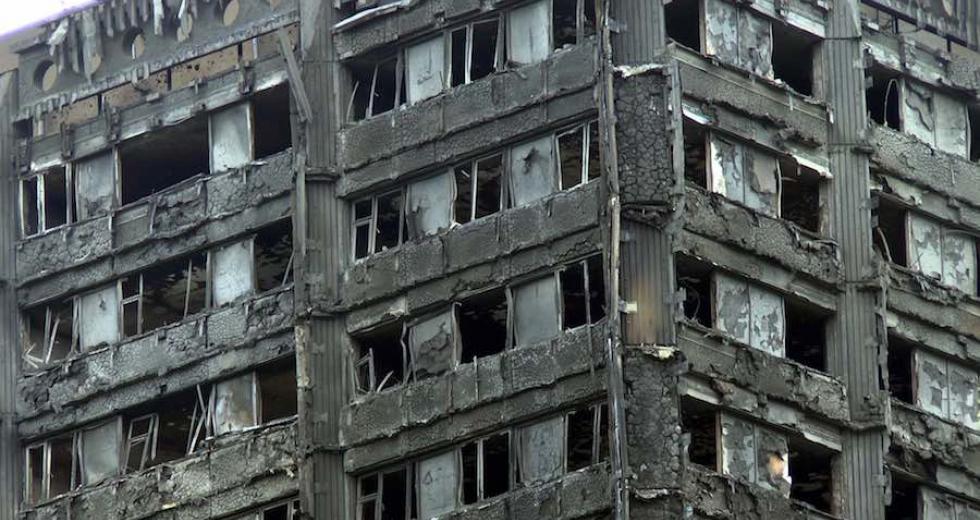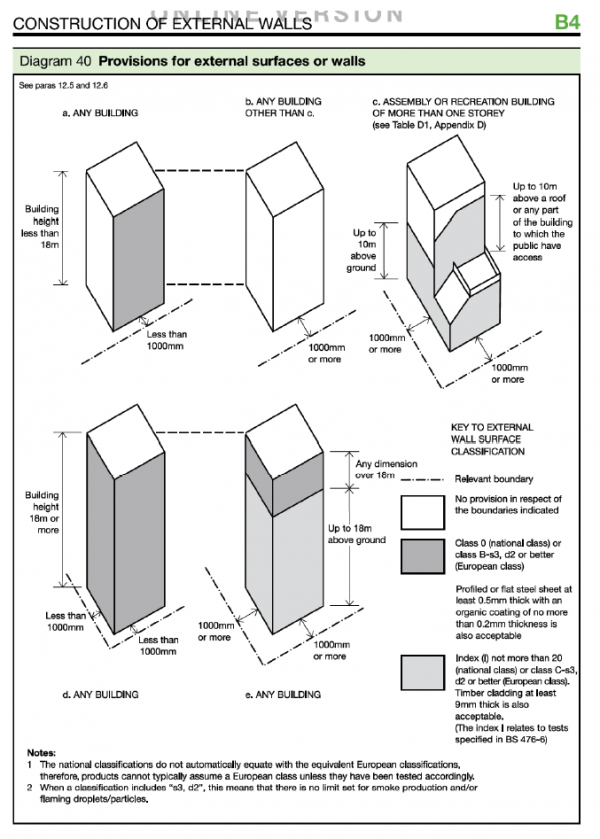
Politicians talk of the horrors of deregulation, and look to use this spectre to pin the blame for Grenfell on their opponents. This is understandable, for it is in their interests to have more regulation and more control over society; all for the greater good of course. But they are wrong. The story here is much bigger; it is an example of our ordered and regulated world running aground. It was not deregulation, but regulation itself, which led us here.
This is true on several levels; the endless drive for thermal efficiency in response to politically-motivated global-warming alarmism is one issue. A warped sense of risk, where common-sense judgement is replaced by over-conservatism and loss of perspective, is a second. The monotonous languor that affected officials, when alerted by residents that fire risks were going unaddressed, is most certainly a third. It all points to an ebbing of skill in handling the uncertainties of life.
It is in the application of the fire regulations to Grenfell Tower that we find the simplest and most stark example; one that illustrates the limitations of regulation itself. For the rules that govern our lives are shown here to fail to provide the security we desire, but which only constant thought, alertness and sagacity can hope to approach.
Fire regulations are complex and seek to cope with virtually every building type and configuration. The regulations offer several alternative routes to demonstrate that the basic objectives are met. These objectives are firstly the preservation of human life and, very much secondly, property protection. It must be emphasised that fire in a building is extremely deadly, mostly due to smoke and asphyxiation. Fires are unpredictable and tend to find the smallest defect in defences. Having carried out several structural assessments of fire damaged buildings, I can personally attest to their destructive power.
Options to show that a design complies with the regulation can include reference to a standard set of rules in a volume called Approved Document B. It can also be in the form standardised testing, studies of previous testing, or advanced computer modelling of such elements as the movements of people and the build-up of smoke. In the case of Grenfell Tower, the insulation material, a combustible foam called PIR or Polyisocyanurate, was justified by means of a fire test on a sample panel. However, the outer cladding in that test was different from the construction at Grenfell. The cladding was justified by reference to the prescriptive rules of Approved Document B – the building regulations.
Here is what they require:

So for tall buildings away from boundaries, the requirement is for a Class 0 surface. This means that British Standard fire testing methods, as interpreted in the regulations, define compliance. There are several criteria rather than a single test, but, at the heart of the process lies the spread of flame test, the result of which must be in the highest category, Class 1. The test is best understood by watching one conducted:
For Class 1, the total length of the sample the flame spreads along in ten minutes must not exceed 165mm. It should be noted that the pilot flame is small, is applied for one minute only and is applied to the exposed flat surface of the product under test.
Results from this testing was included in the certificate for this cladding issued by the British Board of Agrement:

Clearly the basic material, Reynobond PE, and the fire resistant alternative, Reynobond FR, both satisfied the requirement for class 1 surface spread of flame, and hence could achieve the necessary class 0 surface rating. Requirements for limited combustibility are present in Approved Document B for insulation products, but not for claddings without an insulation layer. Hence, although a grade of Aluminium Composite Material (ACM) cladding with mineral core is available that satisfies “limited combustibility” requirements, it was not used. It was not used because a cladding is not an insulation layer, and so the clause did not apply.
It appears this same surface spread of flame test is now yielding Class 3 results in which the flame spreads 710mm in ten minutes, rather than Class 1 (165mm). How could this be?
Simply, either the product sample, or the test apparatus, or the testing procedures have been modified in light of the tragedy at Grenfell to expose the flammable PE core of the ACM to the pilot flame. This is not in accordance with the regulations which state that the surface, not the edge, of a composite product must have a Class 1 spread of flame. Nor is it compliance with the normal application of the testing standard. The tests are being changed in light of the events that they failed to predict.
We need to understand what has happened here. A simple test, dating from 1971, long before composite materials appeared in their current variety, has been used and has become enshrined in “The Regs”. The limitations of that test have been largely forgotten. They are:
- It is a small sample
- It models flame spread horizontally, not vertically
- It was developed to assess the lateral spread of a fire with a compartment along wall and ceiling linings
- The flame applied directly to the sample is a small pilot flame, applied for one minute
- It is a test on the surface spread of flame
In Grenfell, this test was used in to justify external cladding, with a large and persistent flame source, where spread was upwards. All of this is, with hindsight, highly questionable, showing a lack of realism.
But the deadly error was that the assumption inherent in the test itself: that surface spread of flame is the danger. In 1971 this was true. All materials then available would spread fire much more rapidly on the surface, which is exposed to flame action and is open to the air, than by burning through the thickness of the material. The use of ACM, with an essentially non-combustible aluminium facing but a highly flammable, low melting point PE core, invalidated that assumption. Fire is spread not along the surface, but through the flammable core. This was missed by the testing.
And this is the key point: the regulations, by means of their specificity, their inflexibility, and their regimentation, do not encourage analytical thought, but rather demand compliance. Introduced in 1965, their presence is a constant in the life of every architect, every engineer and every builder. They offer the appearance of safety in their fixed rules. But when those rules are no longer appropriate, due to innovation in materials, building form or end-use, the skills required to spot the problem are no longer present in those charged with making decisions. The problem is missed. Our construction industry, in fact our whole society, has faith in rules, but mistrusts judgement. We forget to be curious; we no longer use our imagination; we cease to worry about the terrible killer that fire really is. Instead, we have our rules to keep us safe: or so we think.
Now guides and rules have their place, but not as a substitute for thought. To be beneficial, they must be thoroughly understood. Nothing can be followed by rote. Rules must be applied as an adjunct to first principles understanding. They must build on the deepest analysis of the essential nature of the matter in hand. Anything less may lead to another Grenfell.
To properly commemorate the victims of this catastrophe, we are going to have to learn how to think, all over again.
Main image: ChiralJon licensed under the Creative Commons Attribution 2.0 Generic licence.

